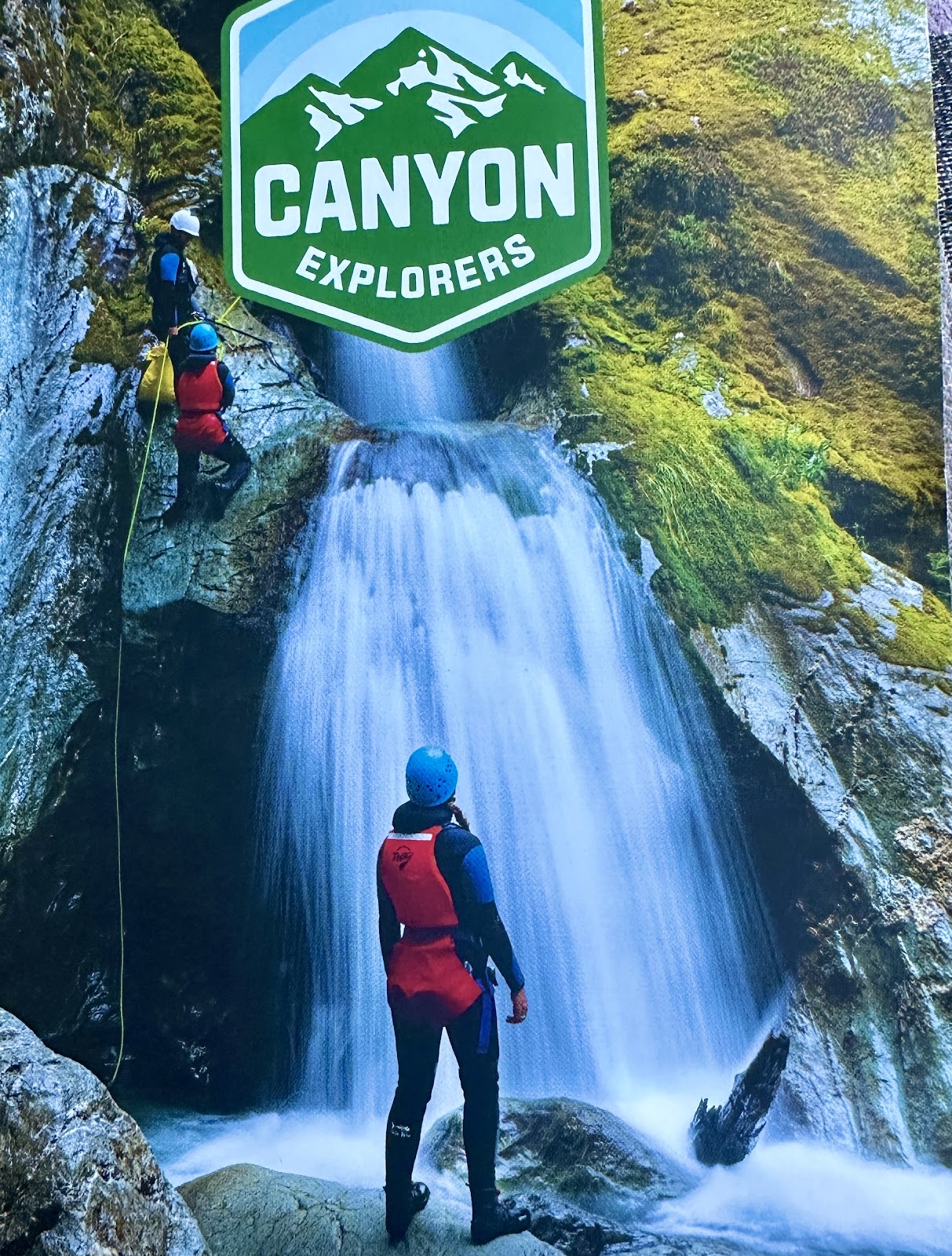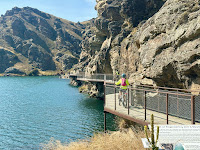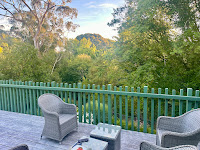Two Trillion, yes I said 2 Trillion and that is not the budget deficit. On a recent trip to New Zealand we visited Mt. Cook, which is regarded as a Dark Sky (UNESCO) site. This means there is no artificial light sources nearby yielding a glare, otherwise the stars pop like flaming lights. At Mt. Cook we went to a planetarium show at the Hermitage hotel and had a very knowledgeable narrator, who made some very interesting comments. He said: "since the Hubble telescope was launched in 1990, the latest estimate for the number of galaxies in the universe is somewhere around 2 Trillion galaxies"
 |
"We are in the Milky Way galaxy and it contains an estimated 100 billion stars." Ok, feeling a little small now. And the chance of life out there seems quite plausible, so why has there been no contact you ask. To begin with the universe is an incredibly vast. Light travels at the speed of 186,000 miles per second, (if I snapped my fingers a light ray would travel 7 times around the planet earth). And the nearest star Proxima Centauri, is 4.25 light years away, otherwise a loooong ways. So unless there are wormholes of some sort, or string theories, or parallel universes, travel as we know it (a spacecraft can travel up to @ 430,000 mph=Parker Solar Probe on 12/24, and a spacecraft carrying humans can only go 17,500 mph) would take many, many lifetimes for any contact even to the nearest star. Of course on the other side of the coin, who knows maybe there is the Prime Directive (Star Trek stuff) with a no interference clause. So the point I'm trying to make is, The EARTH is a very special place--we shouldn't be forced to go to Mars to settle in the future. How about we just take care of our home, Gaia in a sustainable fashion.
* Tidbit 1: Did you know: For every 1°C rise in temperature, the atmosphere holds 7% more water. (Phys.org). The majority of the earth's warming has occurred since 1975 at a rate roughly .15°C to .20°C per decade.Earth observatory- NASA Hmm maybe that's why in October 2024, 35 countries experienced major floods.
Braided Sweetgrass: Braided Sweetgrass on Amazon This book will open your eyes to importance of plants and our roles as humans in this world. The author: Robin Wall Kimmerer is a decorated professor at SUNY State University, and a member of Citizen Potawatomi Nation. This book has changed the way I look at the natural world. She has this innate ability to make a connection between indigenous wisdom and scientific knowledge.
AI computing: Who doesn't like the speed of AI for answering any question we have. Of course with speed comes a tremendous amount of Energy and Water use. This helps to explain the locations for recent investments by Microsoft, Oracle, Nvidia, Open AI. They are involved in an eye popping 500 billion dollar data center project, code name "Stargate," approved by Trump. In 2022 AI accounted for 4.5% of the energy demand in the US. By 2030 that figure is predicted to be 17%, due in large part to generative AI. (Bloomberg analysis) So where are they going to get the energy to run these magnanimous data centers? What is being suggested in the various articles I have read, indicates the building of more Nuclear Power Plants (including the old Three Mile island-site of the worst nuclear accident in US history), and more fossil fuel (clean coal--ha) plants, near areas with a large body of accessible water. One such center is being built in Abilene, Texas and interesting enough the city of Abilene has struck a deal to pump water out of the Edwards- Trinity aquifer which provide a water source to many cities during times of drought. I know some of the energy will be derived from renewable energy such as solar and wind, but the bottom line is that providing this much energy, in a short time frame, will take us in the opposite direction of a sustainable future. So we need to support organizations which will be the watchdogs for these projects: the Sierra Club, Nature Conservancy etc. On the positive side AI will be used to save lives in medicine, predict weather etc.. and a process called machine learning is now being used to solve climate change problems.... the definition of machine learning is when AI applies algorithms to learn from data and make predictions without specific programming...maybe it will figure out what birds are singing about someday.
*Tidbit 2: A 100 word email using ChatGPT takes .14 kilowatt hours (kWh). which is the equivalent of running 14 LED bulbs for 1 hour. That same email uses 519 millimeters of water (1/2 a standard bottle of water) to cool the machines. Wowzer, not good!
30 by 30 project (30 x 30) : Is a worldwide initiative adopted by 190 countries at the UN Biodiversity Conference (CBD-COP 15) in Montreal 2022 (Kunming-Montreal Global Biodiversity Framework). The goal is to have governments set aside and protect 30% of their land and 30% of their bordering oceans by the year 2030. These refuge areas will help prevent mass extinction and ensure biodiversity for future generations-- we have great examples to pull from, like: Yosemite, San Diego Bay National Wildlife Refuge (San Diego Bay National Wildlife Refuge), and Swamis Marine Reserve. Globally there is @ 8% of the ocean in protective reserves and @17% of the land is protected according to the United Nations. This framework was supported under the Biden administration and unfortunately scraped by Trump- another step backwards.
 |
| Local Swamis Beach in Encinitas,CA |
Tidbit 3: Decarbonizing is a big buzzword these days, otherwise eliminating pollutants like Carbon from the atmosphere. A really cool article featured in Sierra Magazine Fall 2024 was on how diesel engines, which power our trucking industry, are changing. The WattEv company, has built a solar powered plant in Bakersfield, with the first megawatt charger in the country. Their goal is to outfit diesel trucks with battery packs with a 300 mile range. This is a tremendous leap, since heavy duty diesel trucks are responsible for 1/4 of 400 metric tons of carbon emissions from the US. There is still no truck that can currently use it, but it is on the horizon.
Politics, not as usual: Which brings me to my next point, with the obvious shift in political climate, we are now in the role of playing watchdog so things don't tilt out of balance too far.
What can we do: If you haven't already joined an environmental organization or belong to a group involved in these recent protests, this is the time to do so. Here are a few ideas:
1. Join the Sierra Club and help block Trump's agenda: stop Trump
2. Join 50501 Movement. 50 protest, 50 states, 1 message. I don't know if you saw this on the news coverage, but there were massive protests all over the country on April 19th representing this movement. It is a grassroots campaign that organizes peaceful protests in all 50 states on specific dates, to oppose anti-democratic and illegal actions of the Trump organization. It's free, just your time to make your voice heard and it is important. 50501 movement I recently joined this movement.
3. Keep buying alternative energy merchandise: starting with electric cars, let's keep this positive change going. On the horizon there are a multitude of new technology batteries which will replace the Lithium car batteries. This will change any problems with battery degradation and disposal that we have now. New battery technology
4. Read the Braided Sweetgrass book it will reconnect you to the natural world.
5. For me personally, I have eliminated my Facebook and Instagram accounts which are both associated with Meta, owned by Zuckerberg who just recently made a 1 million dollar contribution to Trump's campaign and these sites will more than likely be used by our government to monitor freedom of speech as we know it. By the way What's App is owned by Meta too.
6. Keep on the path, I have to tell myself not to be lazy, keep on recycling, shop with my own bags, use refillable drinking bottles, ride bikes, buses, and trains etc. Pick your news channels carefully, yes Fox News is as far to the right as you can get, with no fact checking to speak of. Speaking of which, if you question a story you hear, take the time and run a quick fact check: FactCheck.org a project of the Annenberg Public policy Center.
7. Everything we do makes a difference and a statement. If you have children they will follow your example, if you see some trash on the ground and pick it up this is setting the tone, we love our special home.
So let's Bring back the magic in our lives:
There was wonderful article in the Encinitas Advocate on 4/4/25 called Bringing back the magic to our lives. In this article by Marsha Sutton, she states, "Awe... for awesome has been denigrated". Oh my kid kicked a goal in soccer...awesome. Her idea is to remind us to re-ignite the "awe" in our lives.
 |
| Flannel Plant Sweetwater Reserve |
The kind of thing which lights you up inside and out... like a roar of a lion near your campsite, or riding a 6' wave deep in the pocket. Or an amazing moment like seeing the total eclipse from a special place. So let us try to recapture the "awe-ful" moments in our lives. Maybe it's as simple as going to the desert or mountains on a clear night and gazing at the Milky Way and pondering its vastness (along with the other 2,000,000,000 000 galaxies) or really listening to the birds when they are singing. Being in Nature will remind us there is no individual self, but a oneness of all living things. We just have to slow down and take the time to observe. Otherwise, stop once in-awhile, sit on a rock or under a tree, and enjoy the peace. May you find Wabi Sabi and Happy Earth Day 2025. Jerry
Tidbit #4: If you listen to a humpback whale song sped up 4x times or more, it sounds like a bird call. You'll find these songs on Youtube-pretty amazing when you think about it.





















































































































